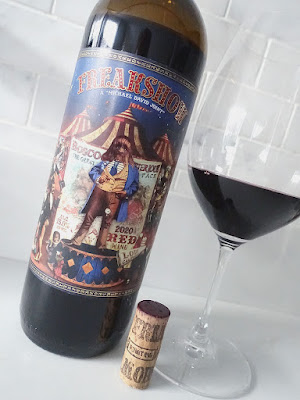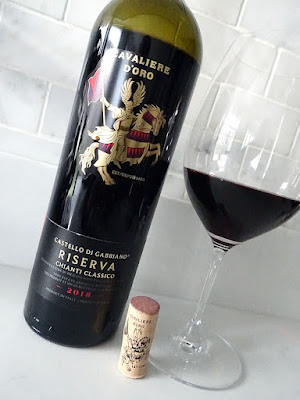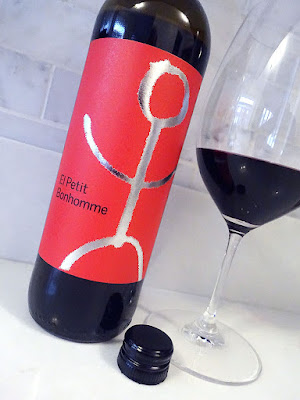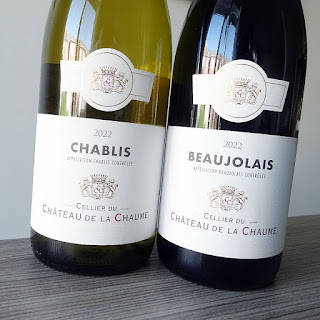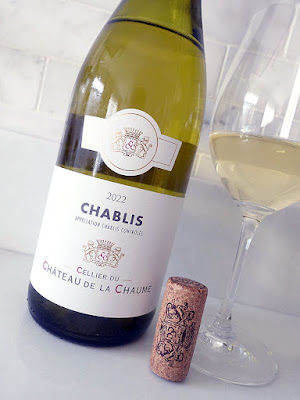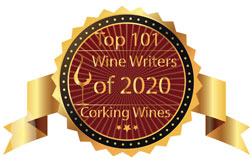red wine review is an excellent Xinomavro from Greece that is brand new to the LCBO, arriving in stores across Ontario last weekend in the LCBO VINTAGES New Release Collection.
It is produced by Katogi Averoff, a Greek winery that began as a hobby in the late 1905's when Evangelos Averoff, a prominent politician, author, and businessman, planted the first Cabernet Sauvignon vines in Greece, on the steep slopes of Mount Pindus. He later bottled the first vintage of what would become the famous Katogi Averoff wines at his home cellar in Metsovo. The words "Vines of France on the mountains of Greece..." adorned the label of the first wine, a label which he lovingly designed.
While initially just a hobby, Averoff developed a vision to replant and transform the abandoned slopes of Pindus into vineyards, as well as revive the indigenous vinicultural tradition that flourished in the region in the 18th and 19th centuries. He also had a desire to boost the economic and cultural development in the region.
With the help of experts in Greece and France, Averoff developed one of Greece's most celebrated and highest-altitude vineyards, which are situated 950 - 1,050 metres above sea level. He also built a small winery on the eastern outskirts of Metsovo and became famous in Greece, while also garnering international awards. Averoff's red wine became the cornerstone of his quest to revive indigenous Greek grape varieties and develop successful blends with foreign varieties, a vision that was reflected in Katogi being one of the earliest to embrace authentic vinegrowing and winemaking methods.
After Evangelos Averoff passed away in 1990, Katogi Averoff continued to grow while remaining true to its founder's vision. His son-in-law, Sotiris Ioannou, became managing director and, under his guidance, new vineyards were planted in the Metsovo region, while experimenting with new grape varieties and blends continued. The winery has also undergone constant updates and expansion, thereby increasing production and expanding its national and international distribution.
Today, Katogi Averoff is managed by Alexander Ioannou, Evangelos' grandson, and continues to cultivate vineyards in the Metsovo region, while focusing on reviving indigenous varieties of the region, and developing wine tourism. The philosophy at Katogi Averoff is based on finding inspiration in life and people, in vines that flourish under difficult conditions, in bears and birds - their companions in the Metsovo vineyards, and in people who overcome all adversities to create. Katogi Averoff is inspired by everything that delights the senses and frees the mind and soul - everything that transforms their winemaking pursuit into a true state of mind.
The name of this wine is "Inima", which means "heart, soil" in Metsovo's local Vlach dialect. This wine is an expression of the positive energy and enthusiasm of everyone who has put their heart and soul into the production of this new range of wines by Katogi Averoff. It is crafted with 100% Xinomavro that was grown in a select vineyard in Rudina, within PDO Naoussa in northern Greece. The 30+ year-old vines are planted on well-drained, sandy clay soil, while the climate in the region is continental, with cold winters and hot summers. Furthermore, the cool air currents from Mount Vermion allow the grapes to ripen fully. After harvesting the grapes in late-September, the grapes were macerated for 7 days, followed by undergoing alcoholic fermentation for 20 days. The wine is then transferred into 300 L French Nevers-oak barrels to undergo malolactic fermentation. It rests on its lees for 2 months, and is aged in barrel for a minimum of 10 months. Let's see how this 2018 Xinomavro from Greece is tasting tonight...
100% Xinomavro, this has clean, fragrant, and slightly perfumed aromatics that are intense with dark red cherry, black cherry, savoury wet earth, and sandalwood notes, along with touches of fine oak spice, black plum, and rose floral notes emerging with time in the glass. It's medium-full bodied with firm, grippy, and drying tannins that add weight and structure to the palate. It's dry with lovely flavours of black cherry, dark red cherry, savoury wet earth, rose floral, sandalwood, and oak spice replays, with touches of licorice and leather adding further complexity. It has very good, juicy acidity, while savoury earth with touches of mineral linger on the long, dry finish. It reminds me a bit of Nebbiolo. Highly recommended buy! Score: 91 pts
Other fine wines by Katogi Averoff can be ordered through their Agent - Kolonaki Fine Wines & Spirits.
It is produced by Katogi Averoff, a Greek winery that began as a hobby in the late 1905's when Evangelos Averoff, a prominent politician, author, and businessman, planted the first Cabernet Sauvignon vines in Greece, on the steep slopes of Mount Pindus. He later bottled the first vintage of what would become the famous Katogi Averoff wines at his home cellar in Metsovo. The words "Vines of France on the mountains of Greece..." adorned the label of the first wine, a label which he lovingly designed.
While initially just a hobby, Averoff developed a vision to replant and transform the abandoned slopes of Pindus into vineyards, as well as revive the indigenous vinicultural tradition that flourished in the region in the 18th and 19th centuries. He also had a desire to boost the economic and cultural development in the region.
With the help of experts in Greece and France, Averoff developed one of Greece's most celebrated and highest-altitude vineyards, which are situated 950 - 1,050 metres above sea level. He also built a small winery on the eastern outskirts of Metsovo and became famous in Greece, while also garnering international awards. Averoff's red wine became the cornerstone of his quest to revive indigenous Greek grape varieties and develop successful blends with foreign varieties, a vision that was reflected in Katogi being one of the earliest to embrace authentic vinegrowing and winemaking methods.
After Evangelos Averoff passed away in 1990, Katogi Averoff continued to grow while remaining true to its founder's vision. His son-in-law, Sotiris Ioannou, became managing director and, under his guidance, new vineyards were planted in the Metsovo region, while experimenting with new grape varieties and blends continued. The winery has also undergone constant updates and expansion, thereby increasing production and expanding its national and international distribution.
Today, Katogi Averoff is managed by Alexander Ioannou, Evangelos' grandson, and continues to cultivate vineyards in the Metsovo region, while focusing on reviving indigenous varieties of the region, and developing wine tourism. The philosophy at Katogi Averoff is based on finding inspiration in life and people, in vines that flourish under difficult conditions, in bears and birds - their companions in the Metsovo vineyards, and in people who overcome all adversities to create. Katogi Averoff is inspired by everything that delights the senses and frees the mind and soul - everything that transforms their winemaking pursuit into a true state of mind.
The name of this wine is "Inima", which means "heart, soil" in Metsovo's local Vlach dialect. This wine is an expression of the positive energy and enthusiasm of everyone who has put their heart and soul into the production of this new range of wines by Katogi Averoff. It is crafted with 100% Xinomavro that was grown in a select vineyard in Rudina, within PDO Naoussa in northern Greece. The 30+ year-old vines are planted on well-drained, sandy clay soil, while the climate in the region is continental, with cold winters and hot summers. Furthermore, the cool air currents from Mount Vermion allow the grapes to ripen fully. After harvesting the grapes in late-September, the grapes were macerated for 7 days, followed by undergoing alcoholic fermentation for 20 days. The wine is then transferred into 300 L French Nevers-oak barrels to undergo malolactic fermentation. It rests on its lees for 2 months, and is aged in barrel for a minimum of 10 months. Let's see how this 2018 Xinomavro from Greece is tasting tonight...
Tasting Note:
KATOGI AVEROFF INIMA XINOMAVRO 2018 - PDO Naoussa, Greece (#30680) (XD) - $27.95100% Xinomavro, this has clean, fragrant, and slightly perfumed aromatics that are intense with dark red cherry, black cherry, savoury wet earth, and sandalwood notes, along with touches of fine oak spice, black plum, and rose floral notes emerging with time in the glass. It's medium-full bodied with firm, grippy, and drying tannins that add weight and structure to the palate. It's dry with lovely flavours of black cherry, dark red cherry, savoury wet earth, rose floral, sandalwood, and oak spice replays, with touches of licorice and leather adding further complexity. It has very good, juicy acidity, while savoury earth with touches of mineral linger on the long, dry finish. It reminds me a bit of Nebbiolo. Highly recommended buy! Score: 91 pts
Other fine wines by Katogi Averoff can be ordered through their Agent - Kolonaki Fine Wines & Spirits.




